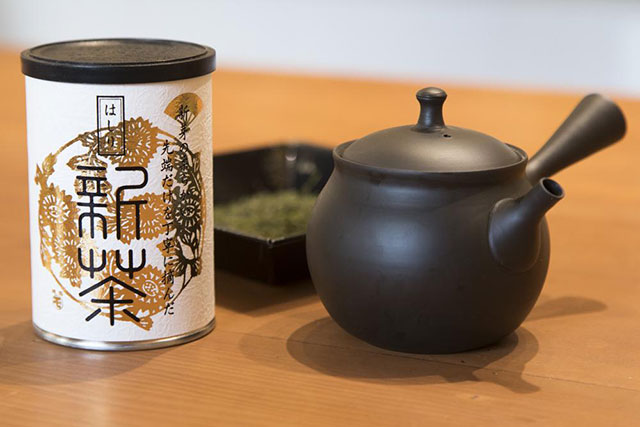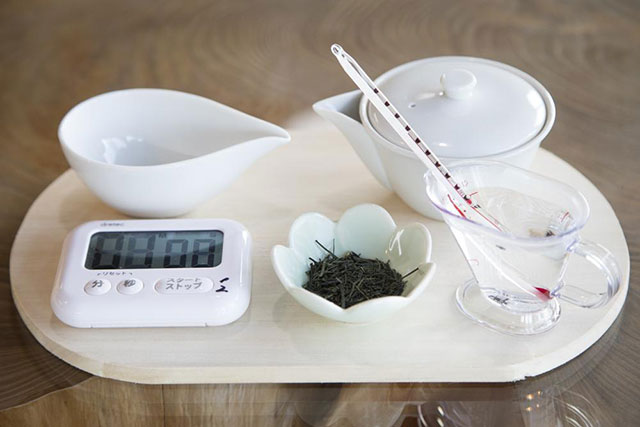
In Japan, tea is much more than a beverage. Its preparation and service is a display of master craftsmanship, and an important way to honour tradition, celebrate culture, and accentuate the delicate nuances of Japanese cuisine. Though it’s certainly more complicated than your standard routine of dunking a bag into a porcelain mug, don’t be daunted by Japanese tea. With a few simple guidelines in mind, you’ll soon be enjoying everything from genmaicha to gyokuro without breaking a sweat.
-
01
Tea Tools
![]()
Before you begin, you might want to pick up a few tools to help you brew that perfect cup. Low Japanese teapots (called kyusu) often come equipped with two important features: first, a long handle sticking out from the side, whose angle keeps you from accidentally burning your knuckles as you might with the ear-shaped grips of western teapots; second: a strainer covering the inside of its spout (called a chakoshi), which keeps loose tea leaves from ending up in your cup. If your teapot doesn’t have a chakoshi, use paper sleeves or a reusable metal strainer to keep leaves out of your tea. For a single serving, use approximately one teaspoon of tea; double it if you’re drinking with company. If you really like to be prepared, pick up a special container used to cool your water (yuzamashi) and a ladle to transfer (hishaku).
-
02
Cool It
![]()
What seems like the most simple step of tea making is its most widely misunderstood. Many of us were raised with the notion that tea is made with piping hot water. Though this is a bad idea with many teas, it’s especially ill-advised with green tea: extreme temperatures will quickly burn the sensitive leaves of sencha (a sharp-flavoured tea that comprises 80% of Japan’s consumed tea) or shincha (young first-flush tea), resulting in a bitter and acrid taste that makes for extremely unpleasant drinking. Each tea has its own optimal temperature, which can be reached by bringing water to a boil (about 100 ml per serving) and then letting it cool for several minutes before pouring it into the kyusu for steeping. As a general rule, hearty teas can handle water as hot as 90ºC, while delicate teas require water to be cooled to around 50ºC.
-
03
Watch the Clock
![]()
Once your water has reached the right temperature and you’ve filled your teapot, pay close attention to how long you let it steep. Even the right temperature of water can spoil a tea if left for too long—and weaken the already subtle taste of smoother teas if not left for long enough. Check the packaging of your tea for instructions, but note that steeping time is short: as little as 30 seconds and rarely more than 2 minutes. This is a particularly tight window, so if you’re prone to bouts of absent-mindedness, you’d do well to invest in an egg timer.
-
04
Have a Second (or Third) Cup
![]()
Some tea can be brewed more than once, though weaker teas like gyokuro and shincha might not deliver as much flavour in subsequent cups. When using the same leaves to rebrew, shorten the steeping time to keep your tea from scalding—and if you’ve run out of water and need to reboil, make sure you allow the appropriate cooling time before steeping your tea. Most green teas can be steeped up to three times (caffeine levels drop with each new brew), which means you can get a whole afternoon’s worth from a single pot.
-
05
Strange Brew
![]()
Followed the steps but still not satisfied? Several other slip-ups can affect the taste of your tea. For example, a key component of tea is water. If you live in a region where what comes from the tap leaves something to be desired, use mineral or filtered water instead. Pay extremely close attention to timing: if your tea tastes bitter, you’ve likely burned it or steeped it for too long. Also, keep in mind that you often get what you pay for: though you may balk at the price of high-quality teas, their price is often justified. Once you know how to make it, purchasing a premium Japanese tea delivers unparalleled taste.






 Go here
Go here





